Small bushy trees can be perfect in a winter garden. While winter may seem like a dreary time for gardens, it doesn’t have to be! Incorporating trees and shrubs that shine year-round can brighten your outdoor space beautifully, even during dormancy. When frost descends, dazzling barks emerge, plump buds swell with spring’s visions, and hearty evergreen companions hold living foliage amidst so much dieback.
Though delicate flowers and verdant spring growth may lay dormant, winter showcases different garden personalities you may overlook the rest of the growing year. Flame-coloured stems glow when backlit by low winter sunlight. Peeling patches of cream, amber, and cinnamon bark elicit cosy feelings of wrapping up by the fire with a hot drink.
Read on to discover six of the best small, bushy trees that offer plenty of winter interest and charm to brighten up your landscape most months of the year.
Here Are Six Of Our Favourite Small Bushy Trees
1. Arbutus unedo – The Strawberry Tree
Though originally from southern Europe, the Strawberry tree fruit adapts remarkably well to the UK climate. This unique little tree offers cinnamon-coloured peeling bark and dangling red, berry-like fruits persisting from autumn through winter. The delicate white flowers come later to greet spring. With its multi-season appeal, the arbutus tree makes an excellent focal point.
Mature height reaches between 5 and 9 metres, making Strawberry trees suitable for small gardens given adequate spacing. It prefers reasonably well-drained soil and mostly full sun exposure. Avoid particularly wet or compacted soil. Once established, this Mediterranean broadleaf tolerates some drought. The fruits attract birds for lively winter activity.
While the common name references its berry-like fruit, the “strawberry” appearance is visual only. According to some palates, the edible fruits carry a sweet, delicate flavour with a hint of pine. The fuzzy red fruits first ripen in early autumn and last into early winter, sometimes clinging until new spring growth emerges.
Beyond the late fruits, standout cinnamon-hued bark steals the show in winter when foliage drops. Newer bark takes on a smooth, red-brown complexion that peels vertically in thin curling strips.
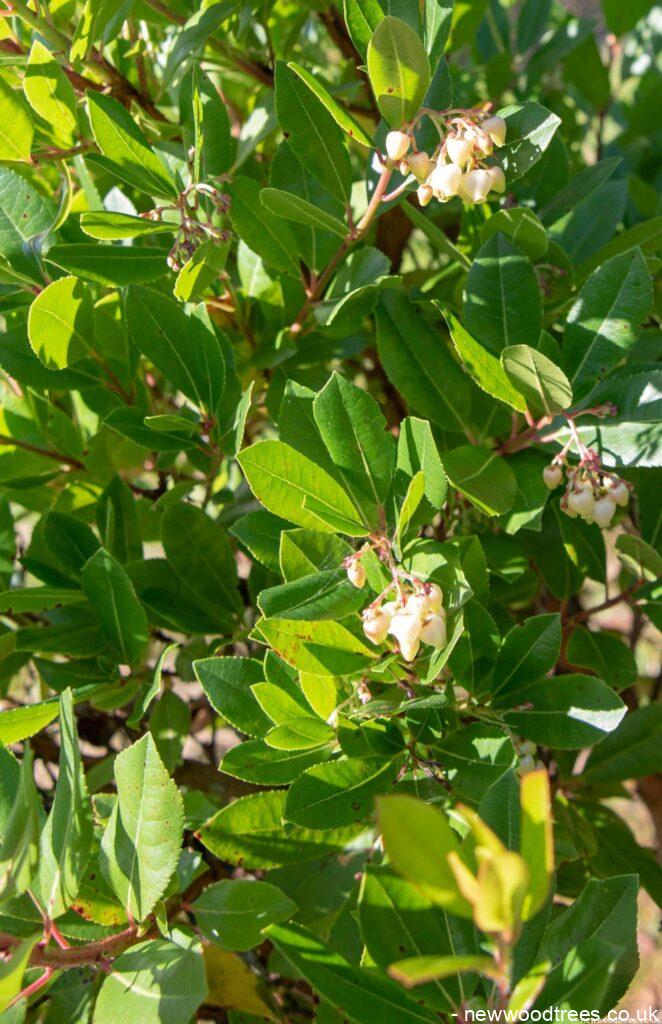
2. Euonymus alatus – The Winged Spindle Tree
Grown primarily for its supreme flame-coloured fall foliage, Winged Spindle also offers striking winter appeal. Along younger stems, bark takes on a unique crisscrossed texture resembling wings, which offers fantastic textural interest during dormancy. With maturity, the bark becomes more cork-like and ridged. The tree forms a neat oval shape up to about 5 meters tall and wide when mature.
While some deciduous small bushy trees can appear rather drab in winter without foliage, the Winged Spindle’s architectural limbs share great elegance. The corky bark ridges become especially prominent when bare. Younger stems reveal blue-green inner bark when outer layers shed. Paired with evergreen companions, this petite tree remains a focal point all winter.
Best situated in part sun to light shade exposure, Winged Spindle thrives in evenly moist, well-drained soil. Some afternoon shade proves beneficial, especially in hotter regions. Avoid soggy soil. The visual interest and compact growing habit make this a striking choice for smaller gardens or to frame an entryway.
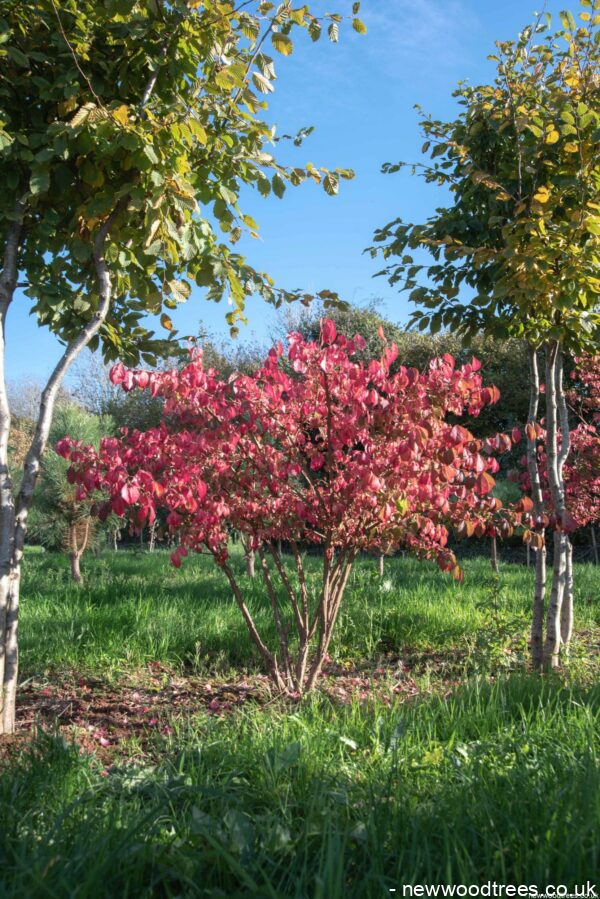
3. Euonymus planipes – The Flat-stalked Spindle Tree
A low-growing spindle variety, the Flat-stalked Spindle Tree shows off glowing coral-pink fruit capsules known as twin pods during winter dormancy. Coupled with its shocking pink and orange young stems, it won’t fade into the background on your garden’s dullest winter day.
This compact, spreading euonymus planipes tree matures around 2 to 3 meters tall and wide. The ovate leaves emerge purple-tinged in spring, then mature to a rich green in summer. Beginning in early winter, bright coral seed pods split open to reveal vibrant, orange-coated seeds, which birds and squirrels relish all season. The pod’s halves often cling to bare branches well into spring. Ivory flowers come later, around June, but prove rather inconspicuous.
The peeling papery bark ranges from olive green to birch white on newer growth to grey-brown on older stems. Smooth at first, maturity brings lightly fissured platy bark. Dramatic crimson-pink new shoots contrast beautifully, especially when coated in frost or snow. Yellows, reds, and purples paint the modest fall foliage display before the leaves drop.
Situate this eye-catcher in full sun to partial shade with decent drainage for optimal growth. It suits positions in flower beds, small groupings, shrub borders, or naturalised areas. Plant these small bushy trees among evergreens like holly or pine for a winter wow factor so the colourful stems and fruiting capsules shine.
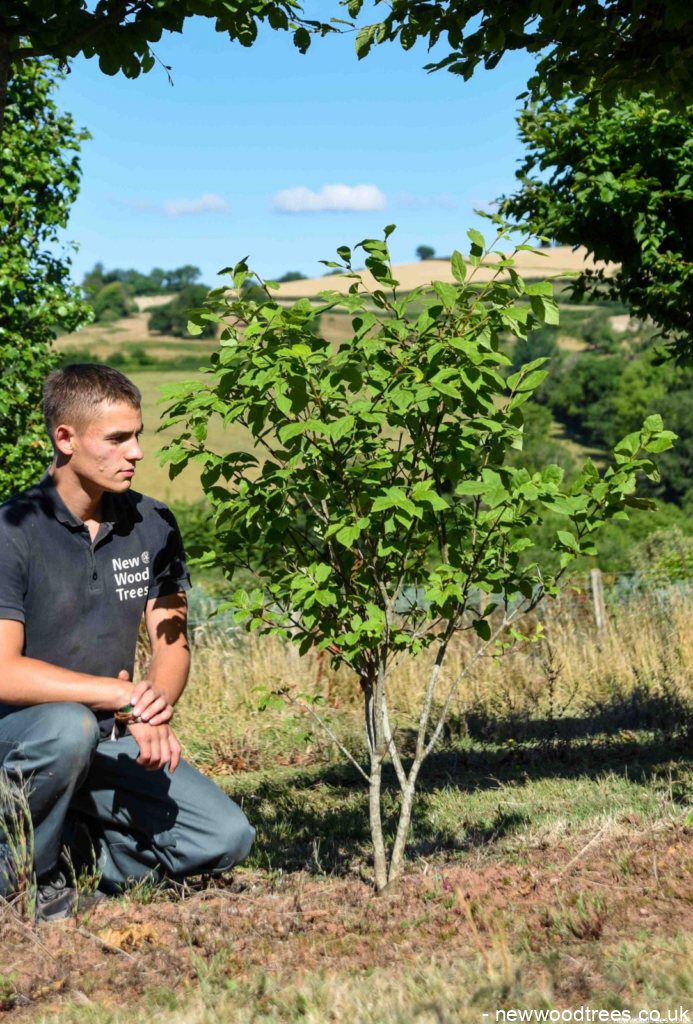
4. Hamamelis intermedia ‘Pallida’ – Witch Hazel
This medium-sized, vase-shaped deciduous shrub fills the late winter garden with sweet fragrance and delicate sulphur-yellow strappy flowers. While technically classified as a shrub, it reaches small tree size at maturity, around 4 to 5 meters tall and wide. The fall foliage ranges from golden yellow to deep red to a striking purple red.
Witch hazel blooms early in the year, sometimes beginning to unfurl its delicate ribbon-like petals as early as December when little else grows in the garden. The flowers continue opening progressively over weeks, with peak bloom in February or March. You may spot bees foraging on the small yet abundant blossoms on warmer winter days. The little flowers carry a clean, fresh scent lightly reminiscent of citrus.
Beyond its flowers, Witch hazel captivates with smooth hazelnut-brown bark that darkens slightly with age. Fiery orange lenticels dotted across older trunks and branches add further visual appeal. Growth habit tends toward multi-stemmed and vase shape, with wide-spreading horizontal tiers.
Best growth occurs in organically rich, moisture-retentive but well-drained loamy soil. Light shade helps preserve those vibrant blooms. Situate Hamamelis intermedia ‘Pallida’ as a stellar border plant, featuring winter specimens or fragrant additions to cut flower arrangements plucked straight from your garden. The fall colour and late winter blooms keep this witch hazel variety shining.
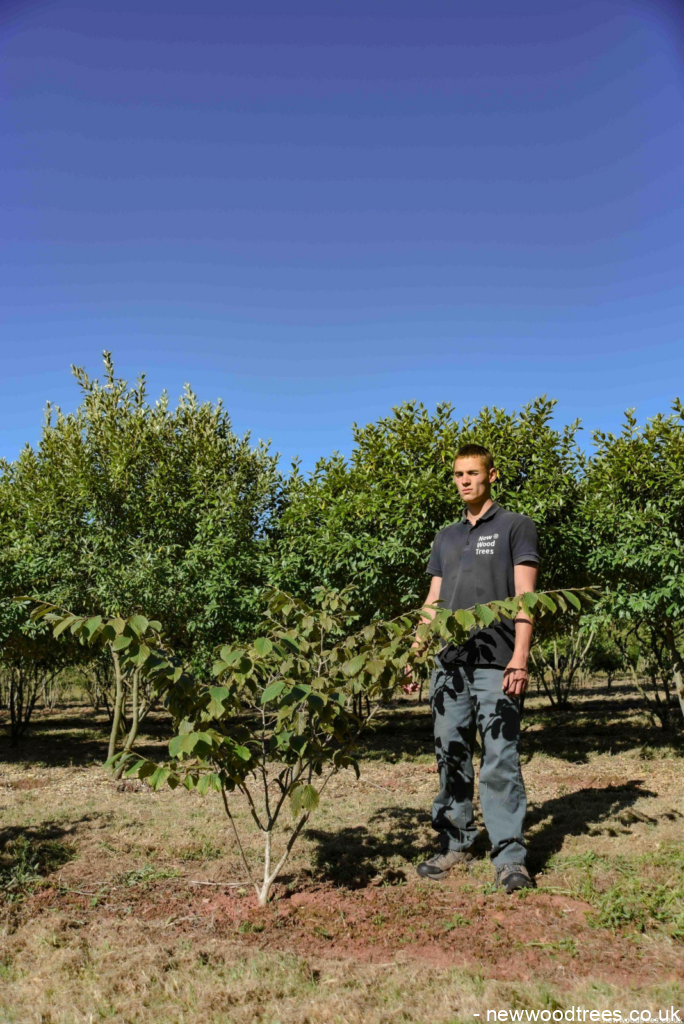
5. Pinus mugo – Mountain Pine
A hardy, small-statured evergreen, Mountain Pine offers year-round greenery, intriguing needle textures, and colour. In winter, its plump vegetative buds swell noticeably in rich hues of red and orange near branch tips. These colourful buds then elongate into soft new growth come spring. The dwarf growing habit and multi-season appeal make this rugged little pine a fantastic addition to rock gardens.
This dense, bushy conifer typically remains under 2 meters tall at maturity, with slightly spreading horizontal branches. Growth rate progresses moderately at around 30 centimetres per year when young. Mountain Pine suits poor soil and atmospheric exposure well, thanks to its native origins in high-altitude European ranges. Give it full sun access and sharply drained soil for the best growth and form.
Thick tufts of stubby blue-green needles measure only about 2.5 to 5 centimetres long but offer a delightful soft texture. Needles remain on the tree anywhere from three to eight years before shedding. Butter yellow pollen cones yield reddish-purple female seed cones by late summer.
Beyond the evergreen foliage, Mountain Pine impresses with its shaggy grey bark textured in small reddish-brown plates with a papery feel. When snow covers the ground, the rich orange bud tips and hints of bark lending seasonal colour keep this squat pine looking alive. Plant these small bushy trees solo as an architectural anchor amid low-growing winter groundcovers or combine several to make a lush, evergreen statement.
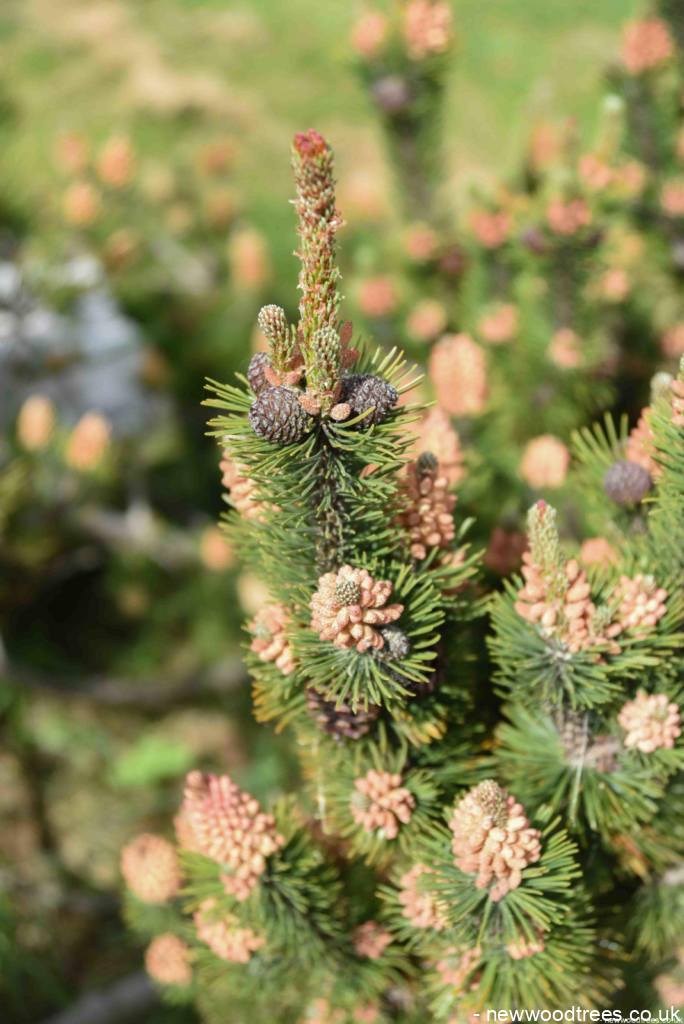
6. Viburnum x carlcephalum – Fragrant Snowball Viburnum
As its name suggests, this semi-evergreen to deciduous vibe brings the enticing scent of early spring to your garden months ahead of schedule. Beautiful pink bud clusters open to reveal perfectly round snowball-like creamy blooms, often as early as December in sheltered UK microclimates. The dark green, ovate leaves often take on rich red and purple autumn tones before dropping. Fuzzy grey buds then endure winter chill to unfold refreshing floral scents when most needed.
Under optimal conditions, mature height reaches around 4 to 5 meters, qualifying Fragrant Snowball Viburnum as a small tree suitable for borders and focal points. Growth habits appear somewhat unruly and sprawling when young but gradually improve with light annual pruning.
The verdant leaves emerge with a distinct reddish tint in spring, then mature to dark green, and finally fade to lovely purples and reds in autumn. In very cold winters, leaves may desiccate and hang on the tree until wind and weather eventually strip them away to reveal a beautiful bare structure.
The creamy white snowball blossoms arise from fuzzy grey buds along previously leafless branches, showing striking contrast against the vibrant reds and oranges of new growth below. Blossoms hold up reasonably well to late winter frosts and snow. Remove spent blooms promptly to encourage reblooming in the coming winter.
Plant Fragrant Snowball Viburnum in humus-rich neutral to mildly acidic loamy soil with decent moisture for best flowering and growth performance. Avoid overly wet conditions. Site it in part shade with some protection to promote heavy seasonal blooming. Limited pruning to shape and open interior areas helps maintain vigorous growth, yielding abundant floral display.






